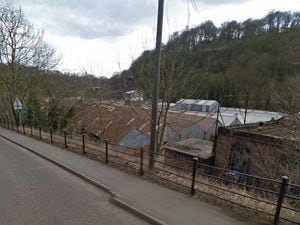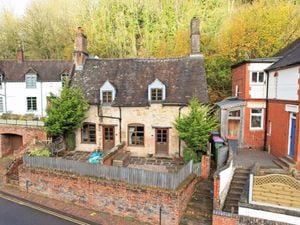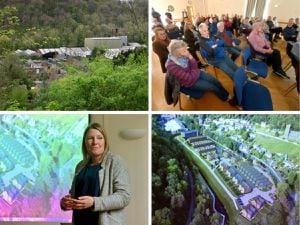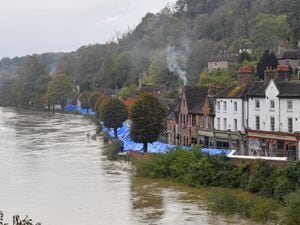Jackfield stabilisation project wins award
A major stabilisation project has won top prize at a national award ceremony
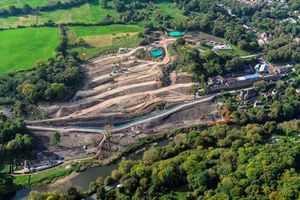
Telford & Wrekin Council is celebrating after its Jackfield Stabilisation Project won the top prize at the Institution of Civil Engineering (ICE) Awards.
The £17.6m project has successfully stabilised the south bank of the River Severn in Jackfield, protecting the area from potential landslips in the future.
It won the Geotechnical award category at last night’s awards ceremony at the International Convention Centre in Birmingham and was also declared overall winner out of 26 projects across the West Midlands, as well as projects from as far afield as New Zealand and Turkey
The Jackfield Stabilisation Project now goes through as the regional entry for the ICE People’s Choice national award to be judged by public vote in November 2017.
The entries were judged by a panel of chartered civil engineers, chaired by former ICE West Midlands Chair, Mark Downes.
Yvonne Aust, ICE West Midlands Chair 2016-17, ICE President Professor Tim Broyd and special guest, Professor Iain Stewart, presented the awards at a ceremony during a black-tie dinner attended by over 300 guests.
Mr Downes said of the Jackfield Stabilisation Project: “This is an outstanding solution to a problem of historic slope instability with great geotechnical complexity.
“By stabilising this hillside which has been moving for hundreds of years, not only has the local community been protected, but also the works helped to protect Ironbridge Gorge, part of the UNESCO World Heritage Site, for future generations.”
Judges thought Jackfield to be an “outstanding project which solves a large, longstanding and geotechnically complex problem.”
The project saw the hillside at Jackfield stabilised with nine rows of reinforced concrete piles and a comprehensive drainage system.
The riverbank was reprofiled and reinforced with a row of mini-piles and large revetment stones.
A new road was built to allow access for residents and business and part of the Severn Valley Way reconstructed with new footpaths and seating facilities.
Angie Astley, Telford & Wrekin Council’s assistant director for Neighbourhood and Customer Services, said: “I am delighted that such an ambitious and innovative project which had the protection of residents and their properties in Jackfield at its heart has won a major award from such a prestigious body as the ICE.
“It is also very much an honour for us to be representing the West Midlands as the regional entry in the ICE’s national awards later this year.”
The awards recognise excellence and innovation in civil engineering across the region and beyond.
High-flying young engineers including Telford & Wrekin Council’s Gareth Rushton and teams who demonstrated superb communication skills, dedication and commitment to their studies, and made a significant contribution to their profession, were also celebrated at the awards.
Gareth, 24, was nominated by the University of Wolverhampton to receive the ICE West Midlands Technicians Award for his excellent performance in the final year of his Civil Engineering Higher National Certificate. Ms Astley said: “Gareth fully deserves this recognition because of how hard he has worked., both on the qualification and in his day job.
“He is a shining example of what can be achieved by hard work and dedication and other young people seeking a career in engineering could do a lot worse than follow his lead. I am very proud of him.”
“I feel extremely honoured to have won the award,” said Gareth today. “I love my job and I find being an engineer challenging and fascinating and I am very proud to have my work on the course recognised by the ICE.”
In his day job, Gareth is responsible for a number of projects including the management of the Stoneyhill closed landfill site near Jiggers Bank island and borough-wide management of Telford’s colliery spoil mounds.
“Both projects are fascinating in their own way – the landfill site is filled with historic waste that decomposes and produces a liquid which is then treated on site before being discharged to Severn Trent Water’s sewer for disposal.
“Colliery spoil mounds are more commonly known as slag heaps and include the waste materials from the region’s mining legacy. My work is all about maintaining site safety and risk management of these public areas.
“As an engineer, it’s fascinating because no two mounds behave exactly the same – often depending on the underlying geology, individual slope stability and water levels within the mound. The combination of these factors means every mound has to be inspected, assessed and risks mitigated individually.
“Telford’s industrial past effectively comes creeping up on us and we are constantly batting underground movement in various parts of the borough.”


